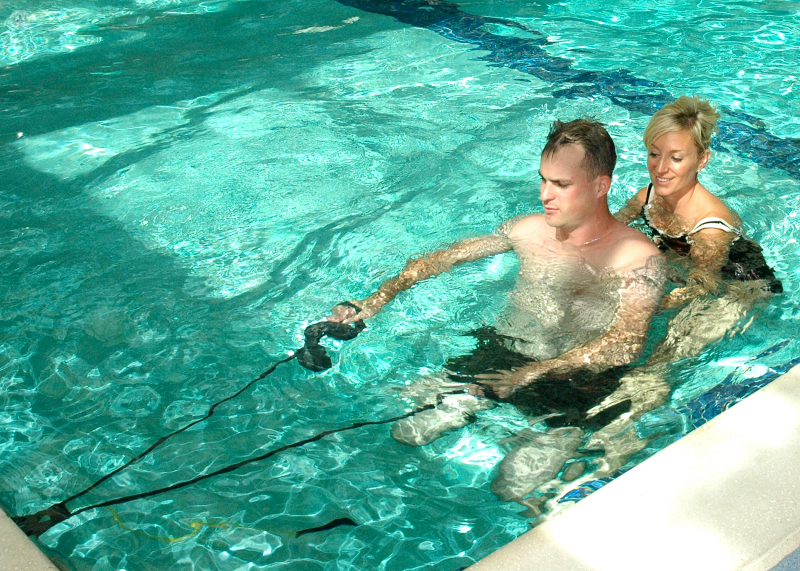Halliwick
What is the Halliwick concept?
The Halliwick concept is a physical rehabilitation technique designed to develop motor control in water, develop core stability, and improve the sense of balance. It is primarily intended for patients with physical disabilities, elderly people with mobility or balance problems, or children with some type of failure in motor development.

The Halliwick Concept was invented by James McMillan in 1949 to teach independence in the water to people with disabilities. This technique can be of benefit both physically (balance, strength and better control of posture) and psychologically (improving social relationships, while eliciting emotion, a sense of fun and setting challenges).
Who can benefit from therapy with the Halliwick concept?
This technique is performed to improve the motor skills of patients, strengthen them through exercise and teach them how to swim.
In the beginning, it was designed for children with physical disabilities, but it has been noted that the concept is beneficial for any patient in need of physiotherapy, both as therapy for neurological damage and trauma, and to improve balance or prevent falls in old age.
What does the Halliwick concept consist of?
The Halliwick concept consists of a set of physiotherapy techniques to be performed in a pool, under the supervision of a professional. This method follows a 10 point programme:
- Mental adjustment: to adjust to turbulence and buoyancy in the water, teach proper breath control, and improve confidence
- Disengagement: reduce dependence on the instructor and encourage more independence in the water
- Transversal rotation control: learning how to return to an upright position from being horizontal and vice versa, progressing to somersaults
- Saggital rotation control: controlling movements from side to side, such as side stepping
- Longitudinal rotation control: learning how to control activities that involve rolling
- Combined rotation control: learning control combinations of movements
- Upthrust or mental inversion: learning about buoyancy
- Balance in stillness: staying relaxed both while floating in the water and with movement in the water
- Turbulent gliding: learning how to control the body’s position
- Simple progression and basic swimming movement
Care after the intervention
The Halliwick concept does not require additional care after the sessions.